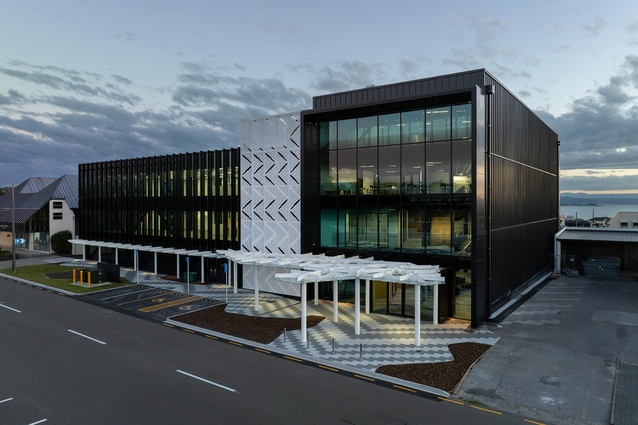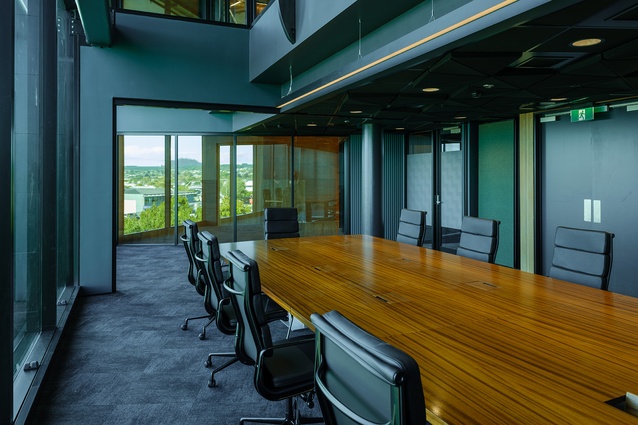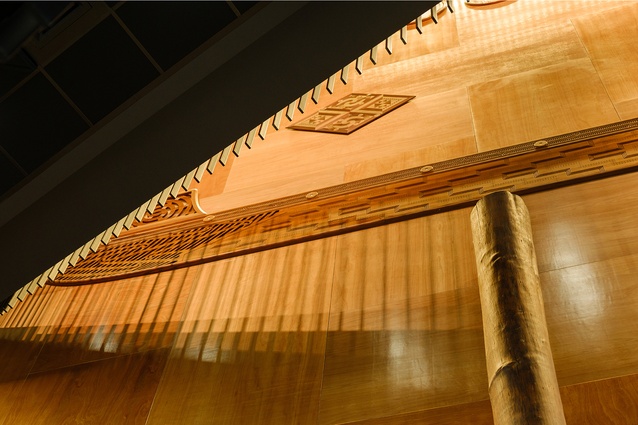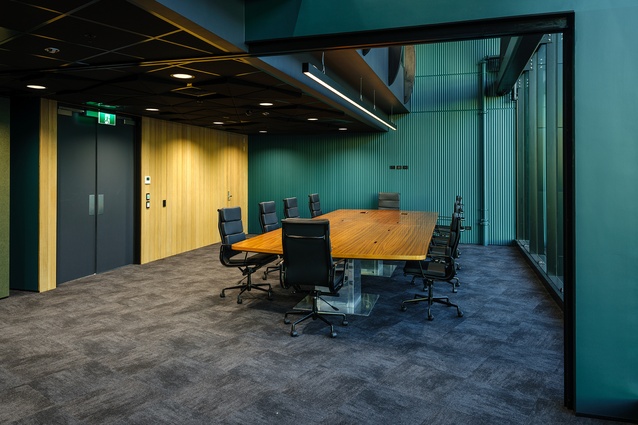New Zealand wool flooring grounds Taupō’s landmark civic project
New Zealand wool carpet tiles by Godfrey Hirst bring warmth, texture and local connection to Taupō’s He Whare Hono ō Tūwharetoa by DCA Architects of Transformation.
Located in the heart of Taupō, He Whare Hono o Tūwharetoa by DCA Architects of Transformation is a groundbreaking civic project that brings together Taupō District Council and Ngāti Tūwharetoa entities under one roof for the first time.
The building is owned and developed by Te Whare Hono o Tūwharetoa Limited Partnership — a collective of Tūwharetoa trusts and companies — and leased in part by the council for its main civic operations.

Designed to IL4 seismic resilience standards and targeting Green Star environmental certification, the new three-storey building is more than a workplace — it’s a living symbol of shared values, respect for whenua, and forward-looking governance.
“This project is significant not just in the Taupō District but nationally. We believe that this building can not only be a flagship for both organisations but also an example of how local government and iwi can work together to build a better future in their rohe,” says David Trewavas, Mayor of Taupō.
Architecture inspired by place
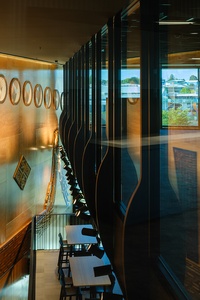
Rooted deeply in the whenua, the design of He Whare Hono o Tūwharetoa is a powerful physical expression of cultural identity and connection to land. At its heart is a soaring four-storey atrium, orientated along ancestral ley lines — stretching south to Tongariro and north to Huka Falls and Aratiatia Rapids. This spatial alignment anchors the building within a wider cultural and geographical landscape, turning architecture into storytelling.
Distinctive design elements bring this vision to life:
• A monumental artwork wall inside the atrium, depicting Tūwharetoa mythologies and the celestial journey of Matariki.
• A laser-cut metal façade referencing Ngātoroirangi casting tassels into the lake, symbolising the birth of aquatic life.
• A sculptural entry canopy shaped to reflect the powerful, churning waters of local rapids.
• Layered interior textures and colours inspired by the forest floor, lakebeds, and volcanic terrain of the Taupō region.
Together, these elements create a built environment that feels both grounded and elevated — anchored in place, yet aspirational in spirit.

A representative of DCA Architects of Transformation said, “It was pleasing for us to see Tūwharetoa occupying the top two floors in the ‘heavens’, a manifestation of a new cultural expression of hononga (connection), governance and the articulation of spatial awareness that architecture can bring.”
A natural and local approach to design
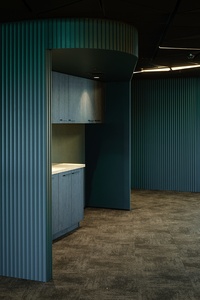
Environmental performance was a core priority. Alongside seismic resilience and energy targets, the building features over 2,800 square metres of Godfrey Hirst Natural Elevation wool carpet tiles in 3 colours: Corriedale Fleece, Drysdale Fleece and Perendale Fleece.
Crafted from renewable, biodegradable New Zealand wool fibre, the tiles are PVC-free, Red List-free, and Green Star Level 4 certified. They also offer high acoustic and thermal performance, contributing to indoor comfort while reinforcing energy efficiency. The modular format allows for easy replacement, ideal for a long-life civic building.
The calming colour palette and organic patterns echo New Zealand’s landscapes, supporting the project’s goal to bring the outdoors in while aligning with the wider narrative of whenua, sustainability and wellbeing.
More than just a design choice, specifying New Zealand-grown wool reflects a deeper commitment to supporting local industries, regional communities and the people who work within them.
This content has been created with support from GH Commercial.
ArchitectureNow works with a range of partners in the A&D supply sector to create and/or source appropriate content for this website and Architecture NZ magazine.
If your brand or clients are interested in similar creative content email mark.lipman@agm.co.nz to enquire.

